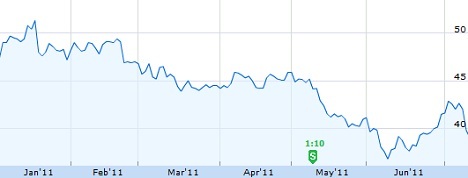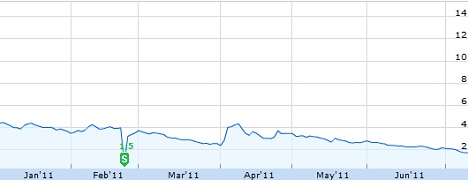Probably every investor at the moment is eying the Facebook IPO. Everyone knows that the stock can skyrocket in the first few days and everyone wants to invest and be part of this new social revolution. The “social revolution”, however, is a two edged sword. Revolution always means that there is an imminent change, which means that as long as there is a social revolution, there will always be yet another change in the way people socialize with each other and meet each other.
Let’s look at how people socialized online in the last decade or so:
– Before 2004, people used to socialize on forums.
– Between 2004 and 2006, people socialized online using blogs.
– Between 2006 and 2007, people used websites such as MySpace, Bebo, YouTube, etc… to socialize.
– Between 2008 until now, people used Facebook to socialize casually, and LinkedIn to socialize professionally.
As you can see, people’s moods are constantly shifting. Who can guarantee that people will not use another website/mean to communicate online in 2 years from now, making Facebook and LinkedIn completely obsolete? After all, both of these websites can be cloned, and maybe someone can come up with a clone even better than the original.
Real investors, when purchasing stocks, purchase it on the basis of the future (and not the current) prospects and potential of the company (if you have doubts about this, just take a look on how investors are treating RIM despite its current earnings).
Now let us examine 3 things: How much Facebook is currently earning in revenue, how much will it earn, and how long should it exist just to pay back the investors. By examining these 3 things, we will be able to assess whether Facebook is an attractive investment or not.
In 2010, Facebook earned $1.86 billion. Which is a decent number, considering the inventory of ads consists mainly of spam and some Zynga trash. In 2009, that revenue was around $1 billion. Note that we’re talking here about revenue, and not profits. Profits are around 25% of that number. Which means that in 2010, Facebook made a profit of $500 million, while in 2009, Facebook made a profit of $250 million. In any case, that’s a 100% increase every year. But we all know, that this 100% increase in profits cannot be sustained every year. Let’s assume that Facebook will be able to increase its profits by 20% every year for the next 5 years, and then stabilizing at an increase of 5% year over year (I think this is a very optimistic calculation):
| Year |
Revenue (in million of dollars) |
| 2010 |
500 |
| 2011 |
600 |
| 2012 |
720 |
| 2013 |
864 |
| 2014 |
1036 |
| 2015 |
1244 |
| 2016 |
13061 |
| 2017 |
1371 |
| 2018 |
1440 |
| 2019 |
1512 |
| 2020 |
1587 |
| 2021 |
1667. |
| 2022 |
1750 |
| 2023 |
1838 |
| 2024 |
1930 |
| 2025 |
2026 |
| 2026 |
2127 |
| 2027 |
2234 |
| 2028 |
2346 |
| 2029 |
2463 |
| 2030 |
2586 |
| 2031 |
2715 |
| 2032 |
2851 |
| 2033 |
2994 |
| 2034 |
3143 |
| 2035 |
3301 |
The above table represents Facebook’s very optimistic revenue over the first 25 years, which will total around $48 billion. Let’s assume, to make the calculation easier, that Facebook’s revenue for the first 25 years after the IPO is $50 billion. Several weeks ago, I estimated what will Facebook be worth by comparing it to LinkedIn, and the number was a minimum of $85 billion. Which means that if the growth of 20% over the first 5 years and 5% over eternity is sustained, it’ll take Facebook 34 years to pay back the investors. A bit high, but we’ve all seen worse (LinkedIn has a P/E of over a 2,500!).
Now, we are forgetting one very important thing, Facebook is a website! Even worse, Facebook is a social website! What will happen if in 2 years from now people will start deserting Facebook (if you think that this won’t happen, take a look at myspace, bebo, etc…)? This can easily happen. Facebook by then won’t be worth even a billion. That’s why Facebook’s execs want that IPO, they want the largest amount of money they can get, and they want it fast, because they know that this game will be over at one point or the other. Facebook’s reason to exist is that people like using it at the moment, but we all know they may stop using it at any moment.
So will Facebook be a dangerous stock? Not at the time of the IPO (I think it’ll be much safer than LinkedIn). But you should sell (or even better, sell short) your Facebook shares as soon as you feel that people’s interest in this social network is dropping.
1 As of 2016, year over year increase is assumed to be 5%, as Facebook’s growth will be tamed since everyone that should be on Facebook will be on Facebook by that time.
Note: This article (as well as all other articles on this website) is an intellectual property and copyright of Fadi El-Eter and can only appear on fadi.el-eter.com.



